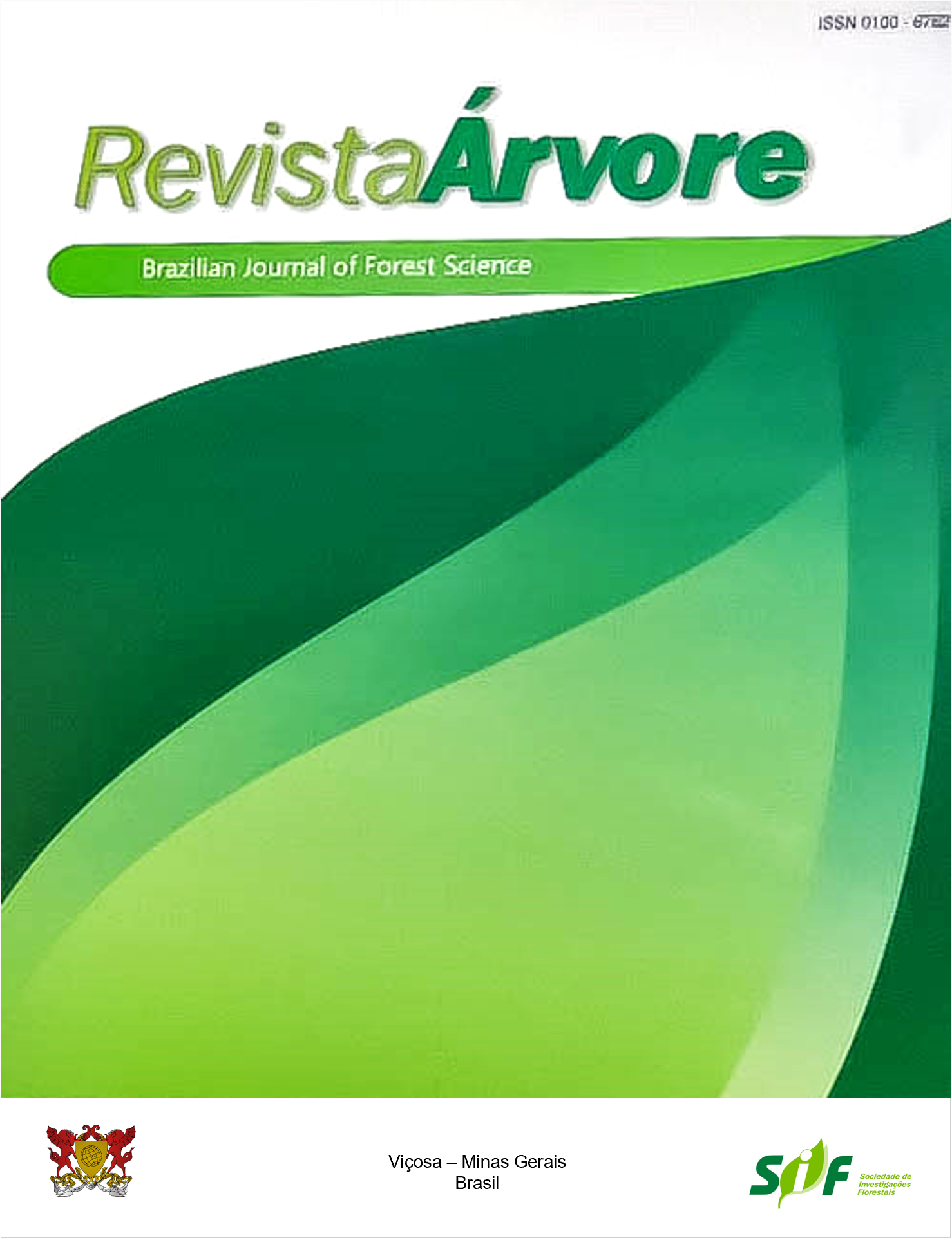FLAME RETARDANTS EFFECTS ON THE INITIAL GROWTH OF Schizolobium amazonicum HUBER EX DUCKE
Keywords:
Wildfire, Hydrogel, Growth analysisAbstract
Flame retardants are efficient in fighting wildfire; however, their environmental implications, especially regarding the vegetation, need to be clarified. This work aimed at assessing the effects of flame retardant on the initial growth of Schizolobium amazonicum. Treatments consisted in applying different flame retardant concentrations via substrate and leaf: Phos-Chek WD-881® (0, 3.00, 6.00, 8.00 and 10.00 mL L-1), Hold Fire® (0, 7.00, 9.00, 12.00 and 15.00 mL L-1) and water-retaining polymer Nutrigel® used as alternative retardant (0, 0.25, 0.50, 0.75 and 1.00 g L-1). Growth analyses were carried out to assess the effects of these substances (10 repetitions per treatment). The aliquot of 10.00 mL L-1 of Phos-Chek WD881 applied on the leaves led to an increase of 70% in leaf area and 15% in seedling height. The same Phos-Chek concentration favored height increase (32%) and total dry mass accumulation (33%) throughout time. The concentration of 15 mL L-1 of Hold Fire® applied on leaves, compromised 45% the accumulation of dry biomass in the seedling. Initially, 1.00 g L-1 of Nutrigel® applied via substrate led to an increase of 70% in leaf area, 29% in plant height, and 89% in leaf dry mass. Therefore, Phos-Chek applied on leaves favored shoot growth in S. amazonicum. Hold Fire® applied on leaves impaired biomass accumulation in seedlings. Nutrigel® applied on substrate does not cause long-lasting damage to the initial growth of S. amazonicum. The aliquot of 0.50 g L-1 administered via polymer leave had positive effect on seedling shoot.
Keywords: Wildfire; Hydrogel; Growth analysis
Downloads
Published
How to Cite
Issue
Section
License
Copyright (c) 2021 Revista Árvore

This work is licensed under a Creative Commons Attribution 4.0 International License.
All authors agreed to submit the work to Revista Árvore and granted the exclusive license to publish the article. The authors affirm that it is an original work and has not been previously published elsewhere. The scientific content and opinions expressed in the article are the sole responsibility of the authors and reflect their opinions, not necessarily representing the opinions of the editorial board of Revista Árvore or of the Society of Forest Investigations (SIF).




